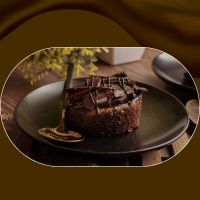Cake pan sizes and mini bundt cake pans. To make a pleasant cake, you must do more than just follow the instructions. Also, it would help if you had the right equipment. One of the most essential is the cake pan. It would not matter how much about cooking; the kind of loaf pot you use can make a massive difference in the result. There are many things to consider when selecting the proper loaf pan. This manual will talk about some of them.
Learning About the Different Types of Cake Pans Materials
When it comes to loaf pots, the material is essential. Aluminum, stainless steel, rubber, and finishes that don’t stick have pros and cons. Pots made of aluminum, for example, keep heat well but might clash with acidic foods. Even though stainless-steel loaves last a long time, they might not bake evenly.
Silicone pots are bendable and don’t stick, but they might need extra support. Non-stick coats are easy to put off, but they might not be capable of managing high temperatures. Knowing the pros and cons helps you make a wise preference.
Picking the Right Cake Pans Size: Size Does Matter
Ever wonder why your loaf didn’t bake as you thought it would? It could be that the loaf pot is too small. Picking the right size is crucial for the desired thickness and baking time. We’ll talk about how the size of your pan affects your recipe. This will help you avoid common mistakes and ensure your cakes always turn out great.
The type of cake pans you use, from traditional round pans to squares and other unique shapes, affects your dish’s appearance. Different pots work best with different recipes. Knowing when to use each shape will ensure that your cakes are not only pleasing but also beautiful to look at. We’ll show you the different types of loaf pots and how to use them best.
What do depth and height do to your cake pans?
The depth of your cake pans affects how it looks and feels. We’ll discuss how different depths can change the baking time so your loaves aren’t too done or underdone. Knowing how pan depth affects your work is essential, whether you’re trying to make a considerable beauty or something smaller.
Many things now have non-stick finishes, but are they always the best choice? We will discuss the pros and cons of non-stick surfaces and suggest options for people who would rather not have them on their pans. Picking the proper covering will make it easy to remove the baked goods without lowering their quality.
Do insulated cake pans make a difference?
Insulated cake pans say they make baking better, but do they do what they say? We’ll discuss what insulated pots are used for and their pros and cons. It doesn’t matter if you like these unique or more common pots; knowing how they work will help you bake better.
Bundt pans make cakes look more beautiful, but there are some things you need to keep in mind while baking in them. To bake a Bundt bun properly, we will tell you how to select the right form and make sure the batter is evenly distributed. Making beautiful Bundt loaves is easy if you know what you’re doing.
How to Keep Cake Pans in Good Shape
Taking care of your cake pans will ensure they last a long time. We’ll discuss how to clean and shop your pots well and make recommendations on how to make them last longer in the pan. Taking care of your loaf pans is as essential as picking the right ones.
You want to avoid scratches and rust. Cake forms should be varied for various events. We will talk about how the form of the bread affects how it looks, whether it’s a round loaf for a birthday or a heart-shaped one for a special occasion. Picking out the right shape gives your food a personal touch.
Tips on How to Bake in Different Cake Pans
There isn’t a single right temperature or time for baking. We’ll show you how to adjust these settings based on the cake pans you choose so that your cakes always turn out delicious. You’ll have perfectly baked goodness every time—no more underdone centers or overly brown sides.
To bake a Bundt bun properly, we’ll tell you how to choose the right shape and ensure the batter is evenly spread out. Adding these tools to your routine can make a big difference in how your cakes look and feel.
Making changes to recipes to fit different cake pans
Some recipes aren’t made for your pan. We’ll talk about changing recipes to fit different pots so your cakes turn out how they were meant to. Any cook should know how changes to a recipe affect the finished result, whether they’re making it bigger or smaller. You don’t have to spend much money on good cake pans. We’ll look at easy options on the wallet and get great results without sacrificing speed. There is an inexpensive loaf pot for every cook, made of stainless steel or non-stick, that will last for a long time.
In conclusion
Picking the right cake pan is an art that blends science with personal taste. Everything you do, from choosing the suitable material to thinking about the right size, is essential to the success of your baking projects. Now that you know what this guide says, you can start making cakes that look great and taste great, which will have a lasting effect.
FAQs
Any cake pan will work for this recipe, right?
You can try different pots, but stick to the pots suggested in the recipe for the best results.
Do I need to grease cake pans that don’t stick?
Most of the time, oil isn’t needed, but it can ensure the release is easy.
How can I keep my cakes from getting stuck in the pot?
Make sure the pan is well greased and put parchment paper on the bottom if needed.
How should I clean cake pans?
Wash the pan with light soap and a soft brush to keep the shape.
Should you always use plastic pans?
Silicone loaves work well for many recipes, but heavy cakes may need extra support.

